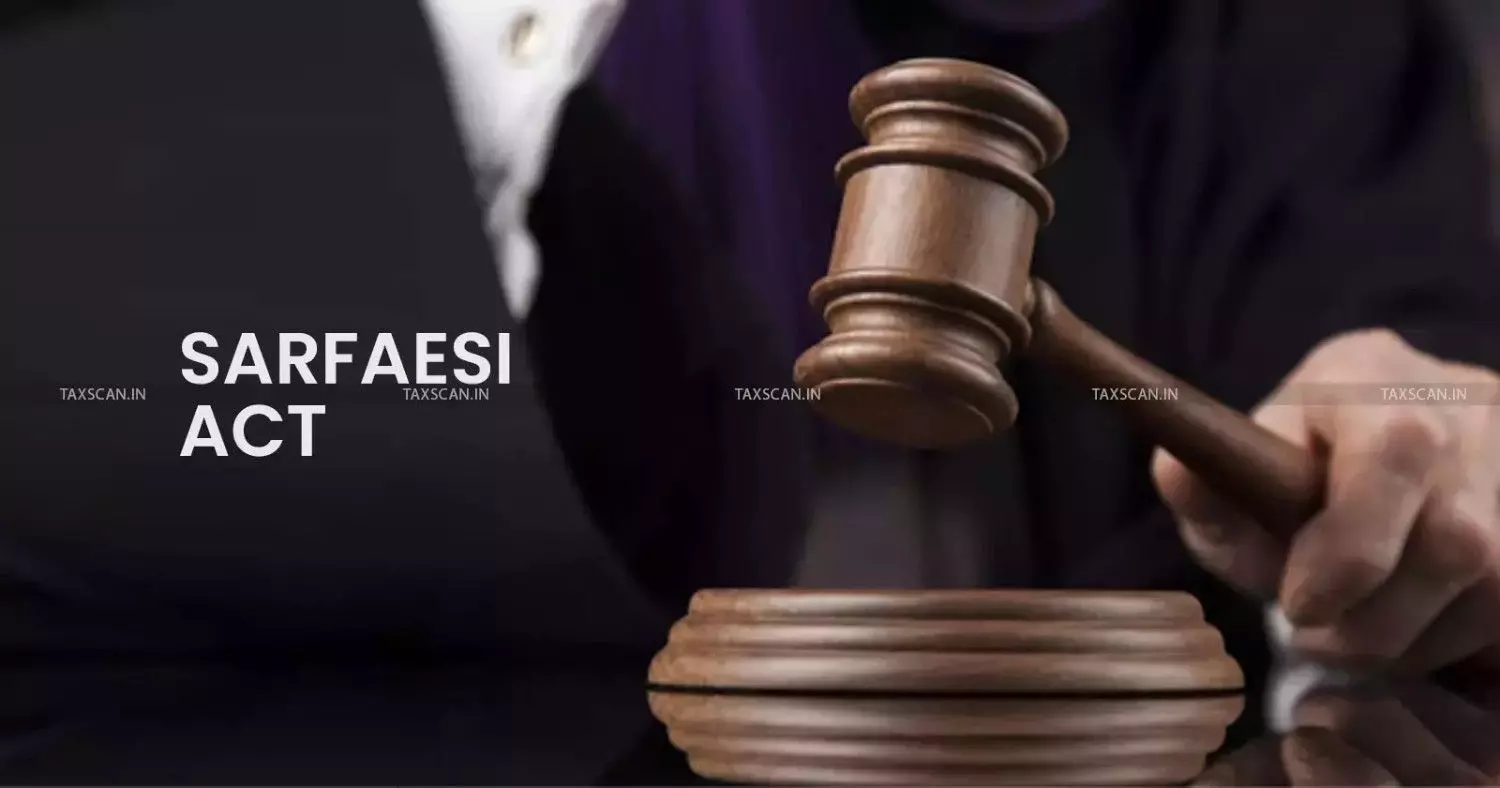"Alternative Remedy Available": Orissa HC Refuses to Interfere in Bank of India's SARFAESI Action [Read Order]
The bench further referred to Balkrishna Rama Tarle vs. Phoenix Arc Private Limited and M/s. South Indian Bank Ltd. vs. Naveen Mathew Philip to deprecate the practice of borrowers using writ petitions to circumvent the specialized and time-bound procedure laid down in the SARFAESI Act.

Sarfaesi-act-taxscan
Sarfaesi-act-taxscan
The Orissa High Court has dismissed a writ petition filed by borrowers against Bank of India, reiterating that the High Court's writ jurisdiction under Article 226 cannot be invoked when an efficacious alternative remedy is available under the SARFAESI Act.
The writ petition was filed by Akshay Kumar and Udaysingh, challenging a notice dated 30.10.2025 and an ensuing advertisement for the auction sale of their mortgaged property by the Bank of India. The petitioners sought to quash these actions and requested the court to direct the bank to settle their dues under a One-Time Settlement (OTS) scheme and release the mortgaged property.
In the case of Bafna Motors (supra), the Supreme Court has held as follows:
“110.3. In accordance with the unamended Section 13(8) of the SARFAESI Act, the right of the borrower to redeem the secured asset was available till the sale or transfer of such secured asset. In other words, the borrower’s right of redemption did not stand terminated on the date of the auction-sale of the secured asset itself and remained alive till the transfer was completed in favour of the auction-purchaser, by registration of the sale certificate and delivery of possession of the secured asset. However, the amended provisions of Section 13(8) of the SARFAESI Act, make it clear that the right of the borrower to redeem the secured asset stands extinguished thereunder on the very date of publication of the notice for public auction under Rule 9(1) of the 2002 Rules. In effect, the right of redemption available to the borrower under the present statutory regime is drastically curtailed and would be available only till the date of publication of the not till the completion of the sale or transfer of the secured asset in favour of the auction-purchaser.”
Understanding Common Mode of Tax Evasion with Practical Scenarios, Click Here
A division bench comprising Justice S.K. Sahoo and Justice Sibo Sankar Mishra, placing heavy reliance on a series of Supreme Court judgments, held that the SARFAESI Act provides a self-contained remedial framework. The court cited United Bank of India vs. Satyawati Tondon to emphasize that the Act is a 'code unto itself' for the recovery of dues of financial institutions, and aggrieved persons must first approach the Debt Recovery Tribunal (DRT) under Section 17.
The bench further referred to Balkrishna Rama Tarle vs. Phoenix Arc Private Limited and M/s. South Indian Bank Ltd. vs. Naveen Mathew Philip to deprecate the practice of borrowers using writ petitions to circumvent the specialized and time-bound procedure laid down in the SARFAESI Act.
Accordingly, the court dismissed the writ petition, stating that it was not inclined to interfere. However, it granted the petitioners the liberty to approach the learned DRT and pursue their grievances in accordance with the law. The court clarified that it had not expressed any opinion on the merits of the case and that the pending applications stood disposed of.
Support our journalism by subscribing to Taxscanpremium. Follow us on Telegram for quick updates


